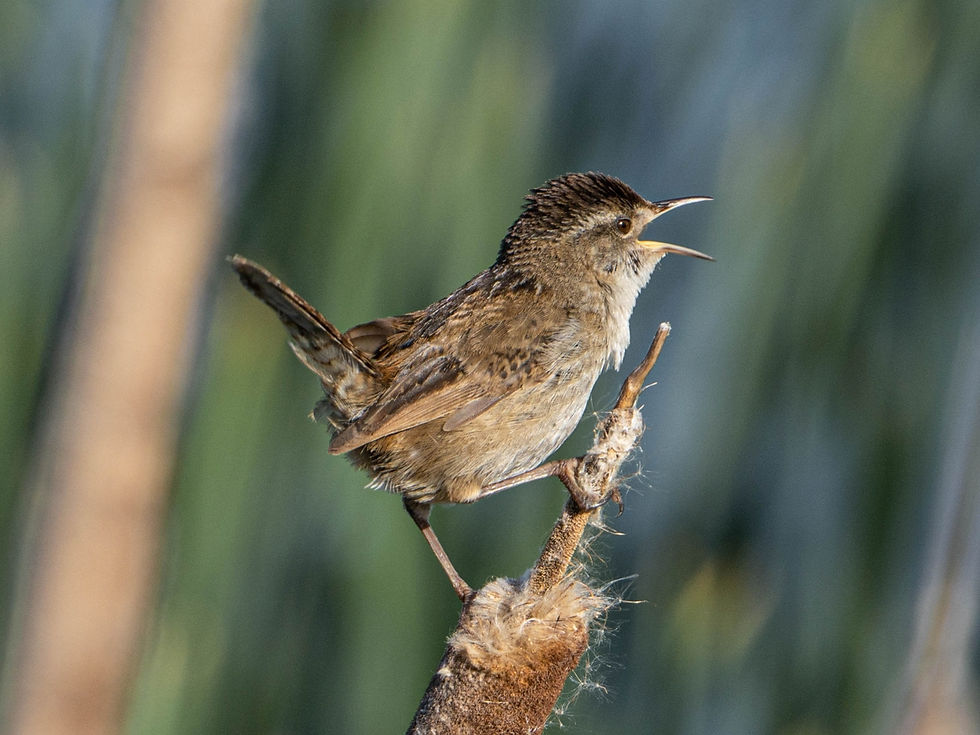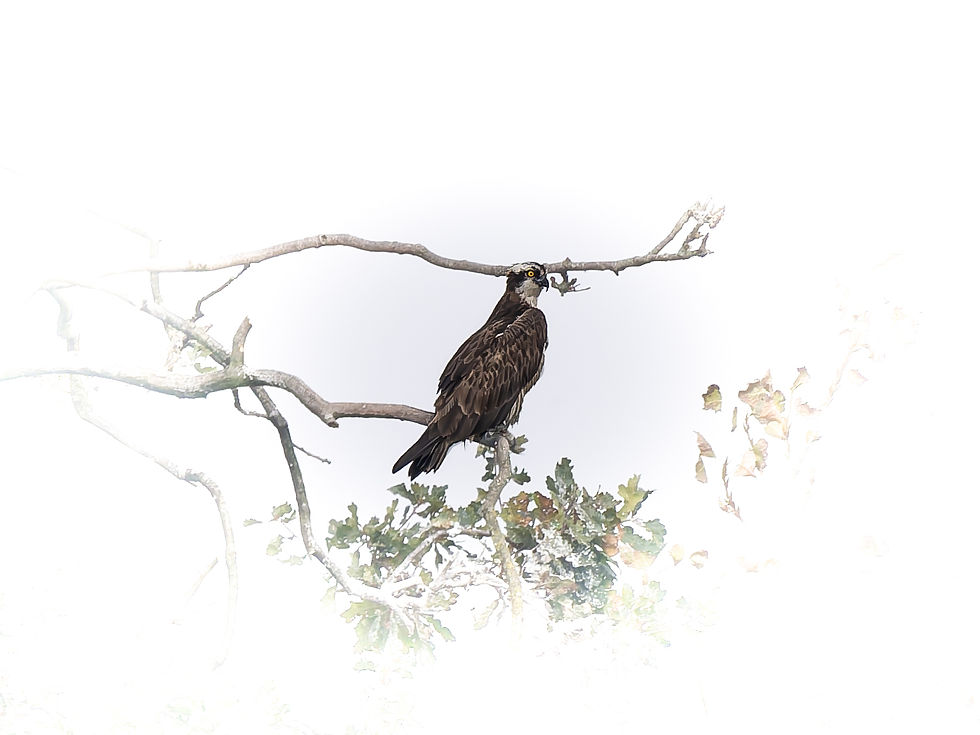Road Trip: North of San Francisco
- Ueli Huber

- May 1, 2022
- 6 min read
Updated: May 10, 2023

Point Reyes National Seashore
Nun ging es hoch nach San Francisco, über die Golden Gate Bridge und kurz nach Sausalito links weg in Richtung Stinson Beach. Wir hielten aber erst an der Bolinas Lagoon, wo sich Reiher aller Art, viele Enten und auch einige Limikolen tummelten. Und natürlich die Harbor Seals: Mütter mit ihren Jungen.
Wir verbrachten die Nacht in einem schönen B&B in Olema. In der Einfahrt begrüsste uns eine Schar Schopfwachteln – einfach reizend. Die Wanderung in der Point Reyes National Seashore auf dem Abbot’s Trail zu den gleichnamigen Lagunen war landschaftlich umwerfend. Das Grün der Küstenprärie wird nach etwa einer Meile abgelöst vom Gelb des Sandes und dem blaugrünen Wasser der Lagune. Und wie jedesmal, wenn wir am Pazifik stehen und nach Japan hinüberschauen, erfasste uns ein Gefühl der Weite, der Freiheit und des Friedens – ein Gefühl, das allerdings in der heutigen Zeit arg täuscht.
Auch hier hielt sich der Vogelreichtum in Grenzen. Es schien, als ob sich die meisten Wintergäste nun definitiv auf den Weg nach Norden gemacht hätten. Eindrücklich war dagegen der Rotschulterbussard, den wir auf der Rückfahrt antrafen. Bei diesem Vogel (und ein paar anderen Greifvögeln hierzulande auch) verwirrt der englische Name etwas. Diese Vögel gehören zwar zu den Habichtartigen (wie so viele Greifvögel), sind aber keine Habichte (hawk, accipiter), sondern Bussarde (buteo), d.h. gehören der gleichen Gattung an wie unser Mäusebussard.

Now we went up to San Francisco, over the Golden Gate Bridge and shortly after Sausalito left towards Stinson Beach. But we only stopped at Bolinas Lagoon, where herons of all kinds, many ducks and also some waders were cavorting. And of course the Harbor Seals: mothers with their young.
We spent the night in a beautiful B&B in Olema. A flock of California Quail greeted us in the driveway - just lovely. The hike in Point Reyes National Seashore on the Abbot's Trail to the lagoons of the same name was scenically stunning. The green of the coastal prairie is replaced after a mile or so by the yellow of the sand and the blue-green waters of the lagoon. And like every time we stand at the Pacific Ocean and look over to Japan, a feeling of vastness, freedom and peace took hold of us - a feeling, however, that is very deceptive in this day and age.
Here, too, the abundance of birds was limited. It seemed that most of the winter visitors had now definitely left for their way north. The Red-shouldered Hawk we encountered on the way back was impressive, though. The English name of this bird (and a few other birds of prey found in the USA) is a bit confusing. Although they belong to the hawk family (like so many birds of prey), these birds are not hawks (accipiter) but buzzards (buteo), i.e. they belong to the same genus as our Common Buzzard.







Zumindest einen der beiden Wanderfalken, die beim Leuchtturm unten in den Felsen brüten, hätte ich schon gerne gesehen, v.a. nachdem ich gerade das wunderbare Buch "The Peregrine" von J.A. Baker fertiggelesen hatte, bevor wir in die Ferien flogen. Sie seien praktisch täglich zu sehen gewesen, meinte jemand aus der Nähe, der wegen den Walen regelmässig hier hinausfährt, nur heute nicht. Schon den ganzen Tag hätte sich keiner blicken lassen. Und dabei blieb es denn auch.
I would have liked to see at least one of the two Peregrine Falcons that breed in the rocks near the lighthouse, especially after I had just finished reading the wonderful book "The Peregrine" by J.A. Baker before we flew to California. They were to be seen practically every day, said someone from the vicinity who regularly comes out here because of the whales, except today. None of them had been seen all day. And that's how it remained during our stay.



Clear Lake: Anderson Marsh State Historical Park
Wir verliessen nun die Pazifikküste und wendeten uns dem Inland zu. Wir fuhren durchs ländliche Amerika, und man kann sich kaum vorstellen, dass die Millionenstadt San Francisco praktisch um die Ecke liegt, so verschlafen wirkte hier alles. Eine Passstrasse, auf der Brigitte die vorher drängelnden Amerikaner bald hinter sich liess, obwohl wir keineswegs mit einem Sportwagen unterwegs waren, brachte uns an den Clear Lake. Hier machten wir am folgenden Tag im Anderson Marsh einen langen Spaziergang durch einen Eichenhain. Bald waren wir von Eichelspechten praktisch umgeben – einmal zählten wir 15! Sie sind offensichtlich am Balzen und Streiten um die Weibchen. Das ist ein rechtes Geflatter und ein lautes Gekreisch! Die Eichelspechte legen ihre Vorräte übrigens in der Rinde der vielen Eichen an: Sie hämmern passende Löcher und schlagen die Eicheln so fest rein, dass die Squirrels da nicht heran-kommen. Bei Bedarf öffnen sie mit ihrem Schnabel die Nuss und holen den Kern heraus. Wir sehen überall solche Vorratsbäume. In vielen Löchern stecken noch die Eicheln, denn noch müssen die Vögel von den Vorräten leben. Sehr speziell waren aber auch die sechs wilden Truthühner (drei Hennen und mindestens drei Hähne), die wir zu Beginn des Spazierganges schon von weitem gesehen hatten und denen wir in dem Wald nun plötzlich einiges näher waren. Und auf dem Rückweg hörten wir nochmals den schönen Gesang des Wiesenstärlings, hier als Lerche bezeichnet. Trotz seinem englischen Namen gehört er nicht der Lerchenfamilie an, von denen es in den USA nur zwei Vertreter gibt (Feld- und Ohrenlerche).

We now left the Pacific coast and turned inland. We drove through rural America, and one can hardly imagine that the megacity San Francisco is practically around the corner, so sleepy everything seemed here. A pass road, on which Brigitte soon left the previously jostling Americans behind her (although we were by no means driving a sports car), brought us to Clear Lake. Here we took a long walk at Anderson Marsh through an oak grove the following day. Soon we were practically surrounded by acorn woodpeckers - at one point we counted 15! They are obviously courting and fighting over females. It's quite a flutter and a loud squawk! By the way, the acorn woodpeckers lay their supplies in the bark of the many oaks: They hammer suitable holes and knock the acorns in so hard that the squirrels can't get at them. If necessary, they open the nut with their beak and take out the kernel. We saw such storage trees everywhere. In many holes the acorns are still stuck, because the birds still have to live on the supplies. Very special were also the six Wild Turkeys (3 hens and at least 3 roosters), which we had seen from far away at the beginning of the walk and which we were now suddenly much closer to in the forest. And on the way back we heard again the beautiful song of the Western Meadowlark. Despite its English name, it does not belong to the lark family, of which there are only two representatives in the USA (Sky Lark and Horned Lark).






San Rafael
Das letzte Wochenende unserer Ferien verbrachten wir bei Freunden in San Rafael. Nun waren wir wie zu Beginn unserer Ferien von Cupertino aus wieder auf dem Bay Trail unterwegs, wo uns schon bald der zierliche Sumpfzaunkönig sein lautes Lied entgegenschmetterte. Hier waren auch vermehrt Greifvögel zu sehen, so der Rotschulterbussard und der Rundschwanzsperber. Und nach dem Bullocktrupial, den wir in Sunnyvale gesehen hatten, zeigte sich hier mit dem Maskentrupial ein weiterer «Pirol», ebenfalls ein Stärling, der an einem Morgen den Hundespaziergang mit unseren Freunden beschloss.

We spent the final weekend of our vacation with friends in San Rafael. Now, as at the beginning of our vacation from Cupertino, we were on the Bay Trail again, where the dainty Marsh Wren soon blared its loud song to us. There were also more birds of prey to be seen here, such as the Red-shouldered Hawk and the Round-tailed Sparrowhawk. And after the Bullock's Oriole, which we had seen in Sunnyvale, another "Oriole" showed up here: the Masked Oriole (which again ornithologically is not an Oriole, but an Icterid). It one morning concluded the dog walk with our friends.







Pinnacles National Park, Redwoods
Nun, Pinnacles liegt nicht wirklich nördlich von San Francisco. Zurück in Cupertino unternahmen wir am zweitletzten Tag unserer Ferien einen Tagesausflug in den etwa 100 Meilen südlich gelegenen Pinnacles National Park. Eigentlich hofften wir, hier die Kalifornischen Kondore anzutreffen. Aber es war kühl und windig: kein gutes Flugwetter! So begnügten wir uns mit Eichelspecht, und wildem Truthuhn. Nicht zu vergessen das Pärchen Kalifornienschopftyrannen, dem wir beim Füttern in seinem Baumloch zuschauen konnten. Und es hatte sich alleine wegen der bizarren, einmalig schönen Landschaft dieser Lavaformationen gelohnt, hierher zu fahren.
Well, Pinnacles does not exactly lie North of San Francisco. Back in Cupertino, we took a day trip to Pinnacles National Park, which is about 100 miles South. Actually, we had hoped to see the California Condors here. But it was cool and windy: not good flying weather! So we were content with Acorn Woodpeckers and a Wild Turkey. Not to forget the pair of Ash-throated Flycatchers we watched feeding in their tree hole. And it in any case had been worth to drive here just because of the bizarre, uniquely beautiful landscape of these lava formations.










Am Tag vor der Abreise schliesslich spazierten wir noch eine Weile in einem nahegelegenen Redwoods-Schutzgebiet. Die hohen Bäume sind wirklich beeindruckend. Der Wald war bevölkert von laut balzenden Diademhähern, und eine Fleckengrundammer liess sich zu guter Letzt als bunten Schlusspunkt noch ablichten.


Finally, the day before we left, we walked for a while in a nearby redwoods preserve. The tall trees are really impressive. The forest was populated by loudly courting and mating Steller’s Jays, and a Spotted Towhee permitted us to take its picture as a colorful finale.




Comments